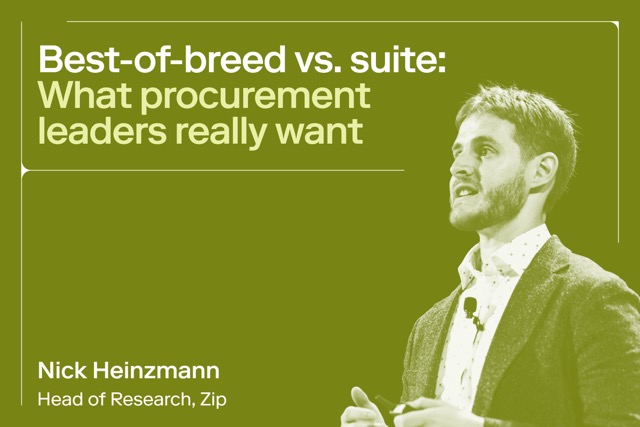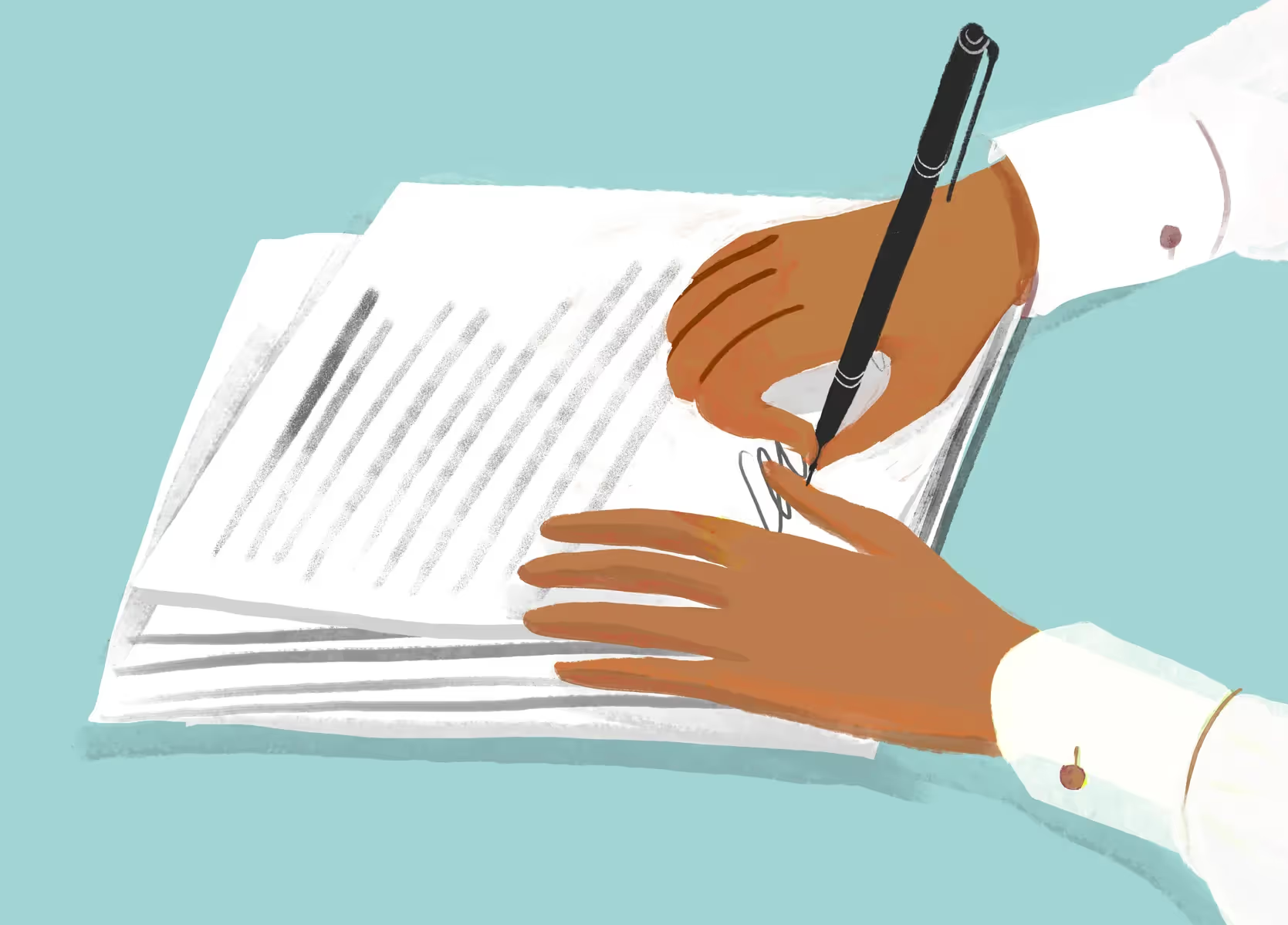
Source-to-Pay (S2P) vs. Procure-to-Pay (P2P) key differences
Learn the benefits of both for optimal procurement.

When it comes to supply chain management and procurement, terminology can become a confusing maze of overlapping definitions and interchangeable phrases. Two such terms that often create confusion are procure-to-pay (P2P) and source-to-pay (S2P). While both refer to business processes that encompass the lifecycle from sourcing goods and services to making payments, they are not entirely synonymous.
This article will dissect the key differences between source-to-pay and procure-to-pay procurement models, highlighting the benefits and ideal applications for both so you can discover how to make the most of your purchasing power.
What is procure-to-pay?
Procure-to-pay is the complete workflow that connects your purchasing decisions to supplier payments. Think of it as the backbone of the procurement cycle, creating a seamless handoff between your purchasing folks and the accounts payable team. This process creates a clean, traceable path that keeps everyone accountable.
P2P touches practically everything in your financial world. It gives you visibility into where money's going, keeps suppliers happy with on-time payments, prevents rogue spending, and delivers data that makes for smarter buying decisions. Beyond this, solid P2P practices protect your organization from compliance issues and unnecessary costs.
The P2P process
The P2P process is a straightforward, sequential flow designed to efficiently acquire the basic items your business needs to run. To clearly illustrate how it works, let's examine each distinct phase of the purchasing process:
- Needs identification: This initial stage starts with someone in the company realizing something is required—whether it's office supplies, raw materials, or a specific service. This phase is about clearly defining what is needed, including the necessary specifications and how many.
- Requisition creation: Once a need is established, a formal request, often called a requisition, is put together. This document details exactly what's required and officially kicks off the purchasing process within the organization's system.
- Requisition approval: This is a crucial checkpoint where the appropriate people or departments review and authorize the purchase request. It ensures the spending is justified, within budget, and aligns with company policies.
- Purchase order issuance: With the requisition approved, a purchase order (PO) is created and sent to the chosen supplier. This PO is the official commitment to buy and clearly states the agreed-upon price, quantities, and delivery expectations.
- Goods or services receipt: When the ordered items arrive or the services are completed, this step confirms that the supplier has delivered what was agreed upon. It verifies the actual fulfillment of the order.
- Invoice receiving: The supplier then sends an invoice, which is their bill for the delivered goods or services. This document outlines the charges and is the basis for the upcoming payment.
- Invoice approval: This is where the received invoice is carefully checked against the original PO and the receiving documentation. The goal is to ensure everything matches up and that the charges are accurate before payment is made. Any discrepancies are flagged and resolved here.
- Supplier payment: Once the invoice is verified and approved, the payment is processed according to the payment terms agreed with the supplier. This finalizes the financial side of the purchase.
- Record keeping: Detailed records are kept throughout the entire P2P process. This is vital for tracking spending, ensuring regulation compliance, facilitating audits, and providing data for future analysis and process improvements.
What is source-to-pay?
Source-to-pay is an extended procurement process that covers everything from sourcing suppliers and negotiating contracts to requisitioning goods, approving purchases, and processing payments. While it encompasses all the steps involved in procure-to-pay, it goes further to include strategic elements like supplier management, contract negotiation, and spend analysis.
The source-to-pay process aims to add value to the organization by automating procurement tasks and enabling more informed, strategic decision-making.
The S2P process
Building on our earlier point, the source-to-pay process takes a wider, more strategic lens to how organizations acquire goods and services. Let's break down the key stages involved:
- Needs identification: Just like in P2P, S2P starts with recognizing a business need. However, it often involves a more in-depth, strategic look at what the organization truly requires.
- Sourcing: This is a foundational step unique to source-to-pay. Sourcing involves actively seeking out potential suppliers through market research, sending out RFIs (requests for information), and engaging in supplier discovery to pinpoint the best possible vendors.
- Supplier evaluation and selection: Once potential suppliers are identified, they undergo a thorough evaluation based on their capabilities, capacity, pricing, quality standards, and potential risks. This often includes using RFPs (requests for proposals) and RFQs (requests for quotation).
- Negotiation and contracting: Once a supplier is selected, detailed negotiations take place to establish terms and conditions, including pricing, service levels, and legal agreements. This culminates in a formal contract.
- Supplier onboarding: This step involves integrating the new supplier into the organization's systems and processes. It includes setting up master data, communication channels, and relevant policies.
- Procurement (Requisition and PO): With a solid contract, the process becomes more transactional. Internal users create requisitions, which are then approved and converted into purchase orders that are sent to the contracted supplier.
- Goods or services receipt: A formal record of receipt is made when the ordered goods are delivered, or the contracted services are completed. This step confirms that the supplier has fulfilled their obligations per the PO and contract.
- Invoice receiving and matching: The supplier then submits an invoice carefully matched against the original PO and the receiving documentation—often a three-way match—to ensure accuracy and prevent discrepancies.
- Invoice approval: Once the invoice is verified, it's routed for internal approval based on established organizational workflows and authorization levels.
- Supplier payment: Approved invoices are paid according to the agreed-upon payment terms outlined in the contract.
- Supplier relationship management: A key differentiator of S2P is the ongoing focus on nurturing the relationship with the supplier. This includes monitoring their performance, managing potential risks, and actively collaborating for continuous improvement and mutual value creation.
- Spend analysis: Throughout the S2P process, data is collected and analyzed to gain insights into spending patterns, identify cost-saving opportunities, and improve sourcing strategies.
Differences between procure-to-pay vs. source-to-pay
People will often use procure-to-pay and source-to-pay (S2P) interchangeably, but they represent distinct, though related, processes.
P2P focuses on the operational efficiency of purchasing, ensuring smooth transactions and timely payments. It’s important, but it represents just one piece of the puzzle.
On the other hand, source-to-pay takes a more strategic and holistic approach to procurement. It includes all the steps involved in identifying, selecting, and managing suppliers, starting with sourcing and contract negotiation and ending with payment. S2P emphasizes strategic sourcing, supplier relationship management, and contract lifecycle management, in addition to the transactional aspects of P2P. This broader perspective allows organizations to unlock significant value and drive long-term success.
S2P vs. P2P: Which is right for you?
Choosing the right procurement approach can significantly impact an organization's financial health, operational efficiency, and competitive edge. Therefore, it's essential to understand the differences between procure-to-pay and source-to-pay to make an informed decision about the best approach for your business.
A procure-to-pay approach may be best for businesses that:
- Have well-established vendor relationships: If your organization already has a vetted list of vendors for various goods and services, P2P can help streamline the purchasing process.
- Prioritize transactional efficiency: If the primary objective is to get from point A (the need for a product or service) to point B (fulfillment of that need) as quickly and efficiently as possible, then P2P is the way to go.
- Operate with standard commodities: Organizations that regularly purchase standard goods and services can benefit from the efficiency and cost-savings associated with P2P.
- Have smaller sourcing requirements: If the procurement tasks are not extremely complex and don't require multiple stages of negotiation, sourcing, and contract management, P2P is adequate.
On the other hand, your business may benefit the most from a source-to-pay model if you:
- Are looking for strategic sourcing options: If you aim to optimize your entire sourcing strategy, including vendor selection, contract negotiation, and relationship management, S2P is the better fit.
- Have complex procurement needs: Organizations with more complex or specialized needs often find that the additional steps in S2P—such as sourcing and contract management—are beneficial and necessary.
- Operate in highly regulated industries: In industries where compliance and regulation are critical, S2P offers the added benefit of improved compliance features.
- Focus on long-term value and cost savings: The S2P approach emphasizes total cost of ownership (TCO) rather than just the transaction price. This can lead to more significant long-term cost savings and value generation.
However, organizations aren't always limited to one approach. In fact, a hybrid model, strategically combining elements of both P2P and S2P, can offer a powerful solution. This allows businesses to leverage the transactional efficiency of P2P for routine purchases while applying the strategic rigor of S2P to more complex or critical sourcing activities.
Unlock the value of your supply chain with Zip Procurement solutions
As procurement evolves from a back-office function to a strategic business partner, understanding the differences between source-to-pay and procure-to-pay is becoming increasingly important. The journey to procurement excellence is all about thoughtfully designing processes that empower your team, strengthen supplier relationships, and deliver meaningful financial results—and finding the right procurement software is a great place to start.
Zip's Procurement Orchestration platform addresses these challenges head-on with an intuitive intake portal that standardizes requests, automated approval workflows that eliminate bottlenecks, and deep integrations with your existing tech stack.
Ready to see how Zip can transform your procurement process? Request a demo today to discover how leading organizations are using Zip to drive compliance, improve efficiency, and unlock untapped value.

Maximize the ROI of your business spend

Enter your business email to keep reading



























.webp)



















.avif)













.avif)










.webp)





.avif)












.avif)
